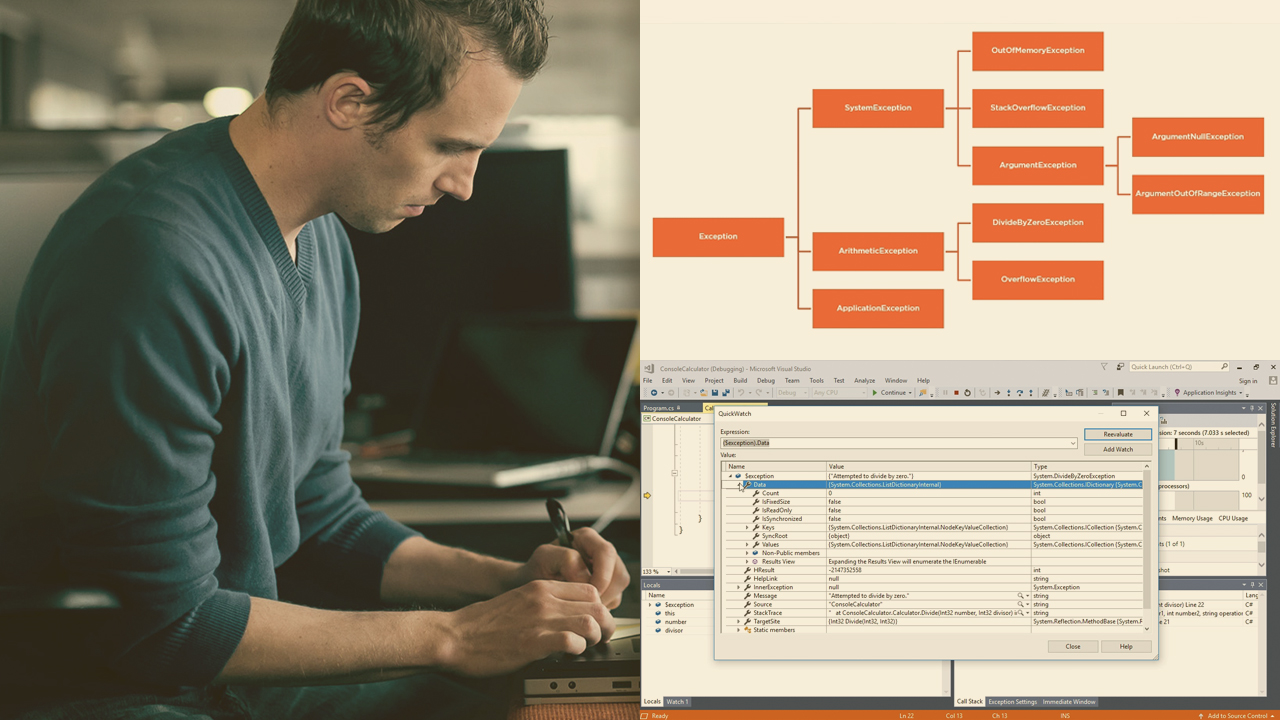- Course
Error Handling in C# with Exceptions
Understanding and using exceptions is crucial to creating readable code that responds correctly to errors at runtime. This course will teach you how to handle errors in C# applications by throwing, catching, filtering, and customizing exceptions.

- Course
Error Handling in C# with Exceptions
Understanding and using exceptions is crucial to creating readable code that responds correctly to errors at runtime. This course will teach you how to handle errors in C# applications by throwing, catching, filtering, and customizing exceptions.
Get started today
Access this course and other top-rated tech content with one of our business plans.
Try this course for free
Access this course and other top-rated tech content with one of our individual plans.
This course is included in the libraries shown below:
- Core Tech
What you'll learn
At the core of handling errors in C# code is a thorough knowledge of exception handling. In this course, Error Handling in C# with Exceptions, you’ll learn how to write code that can detect and respond to runtime errors. First, you’ll learn why exceptions are used to represent errors in C# and how they are organized into class hierarchies. Next, you’ll explore how to throw, catch, filter, rethrow, and wrap exceptions. Finally, you’ll discover how to define, throw, and catch your own customized exception classes and also write unit tests for exception throwing code. When you’re finished with this course, you’ll have a thorough knowledge of C# exceptions that will help you to create production-ready C# applications that detect and respond to runtime errors.
